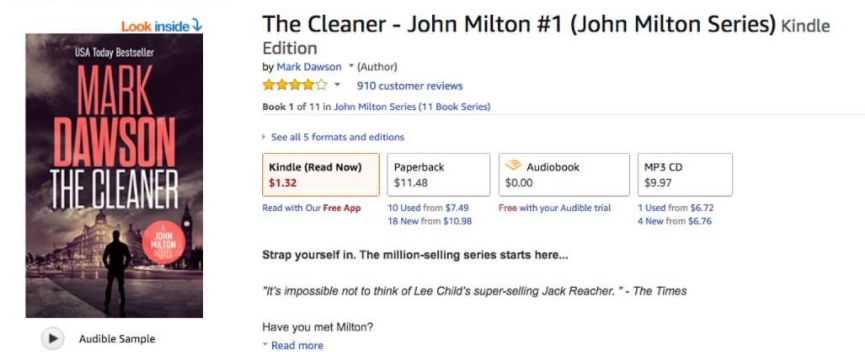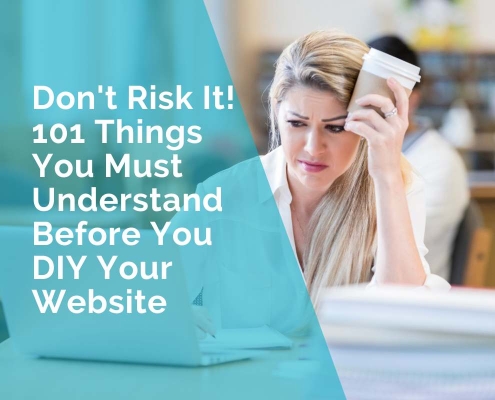6 Marketing Tips On Promoting Your Self-published Book
If you’re a self-published author, you know that writing and publishing a book is just the beginning of your struggle for success. This is where the real challenge begins. When you publish your own work, you are the owner, brand manager, and marketer for your product, and it is your duty to ensure that you sell your book to the right audience.
The first step to success is to figure out how to market your newly published book to the right people in the right way. The right promotional strategies will ensure how much your work sells and will make or break your success as a writer.
The best way to go about this is to form an integrated marketing strategy, consisting of both online and offline methods of promotion.
You need to find out how to reach your readers in a variety of ways to ensure that you’re covering all bases and putting your work out there for the world to see.
Effective marketing can take a lot of work, but it can lead to great results as well. If you’re unsure about how to get started, we’ve created a brief, easy-to-follow guide which you, as a self-published author, can use to promote your book.
1. Bring in readers with an enticing book cover
Before you go about putting your book onto different shelves and platforms, you need to ask yourself: Does my book look appealing to an average reader?
If you’re unsure of the answer to this question, then you need to work on your cover design. An attractive book cover is what catches a customer’s eye as they browse through a bookstore. You need to make sure a reader notices your book among all the other book spines they look at and feels compelled to pull it out.
When you’re a self-published author, you often need to handle these little things by yourself. You don’t have a professional publishing house taking care of such issues for you. But don’t let that be a hindrance to your own creativity. You don’t need a huge budget or design expertise to create your own enticing book cover. With online design tools like PosterMyWall, you can create your own free book cover design in a matter of minutes.
All you need to do is create a free account on PosterMyWall and select your template of choice. Hop onto the editor to add your own touch. Make sure the font you use goes with the genre of your book. Add a picture that summarizes the book’s theme. Add your author name in a visible spot, and your book cover will be ready to go.
As a promotional tactic, try using A/B testing to test out which cover design is likely to lead to more clicks and drive more sales. To do this, design two almost identical cover designs with a slight difference in each. Some elements you can play around with on your designs are:
- Placement of Book title. The title is the first thing to grab a reader’s attention. It needs to be clear, visible, and engaging. Shift the placement of your title in both designs to see which engages readers more. Keep it at the top for one design, while placing it in the middle for the other. You can also play around with different fonts to check which readers find more appealing.
- Imagery. Your book cover should be visually appealing enough to catch a reader’s eye and also go with the theme of the book. Try shifting the visual elements a bit in both designs. Add in a relevant image of a character to see if it makes a difference.
- Color scheme. The right colors can have a huge impact on a reader’s first impression of a book. Are you using bright tones to catch attention? Or are you keeping a subtle color scheme? Change up the tones of your cover slightly. Add a brighter tone to one and keep the other more muted to see which one readers choose to click on.
To test out this process, run simultaneous ads on sites like Bookbubs and see which ad and which cover design gain more traction and clicks. Alternatively, you can make use of softwares like PickFu where a testing audience will select one version of your design along with a rationale. This is a good way to gain qualitative data and get direct feedback from your readers on what attracts them more.
2. Keep your readers hooked with an engaging blurb
A vibrant book cover will get a customer to pick up your book, but it’s the description that will compel them to open it up and start reading.
The description for your book is your main selling point for your content. It will tell your readers what your book is about and what they should look forward to. Write several drafts for your description before finalising it.
- Make sure your description is up to the mark and engaging enough to capture a reader’s interest in a minute. Your description should have the following qualities to remain effective:
- Make it short and precise. Don’t go into long descriptions of what your book is about. Longer descriptions are less effective in keeping a reader engaged.
It should tell the reader about the book without giving away the main plotline. If a reader can figure out what the crux of your book is by the description, they might not be bothered to open it up. - Make use of enticing vocabulary and suspenseful phrases and questions to jog the reader’s curiosity.
Self-published author Alessandra Torre experienced an overnight increase in sales of her book when she changed the blurb provided on her Amazon page. Similarly, authors like Mark Dawson make effective use of catchy phrases and enticing words to draw their readers in on sites like Amazon and Goodreads.

3. Build an audience by starting a blog
Once your book is published, you need to ensure you have a relevant voice online. A reader is more likely to look your book up online before they read it. One way to maintain an online presence is by creating your own blog.
Creating a blog will give you a chance to connect with your target audience. This is especially important for authors of non-fiction books who want to present themselves as a reliable opinion on their book topic. As an author, you can use your blog to test out new theories, start new discussions, and add to your narrative. You can keep your readers engaged and stay relevant long after your first publication if you’re active on your blog.
Non-fiction author and artist Scott Adams uses his blog, The Dilbert Blog to make political commentary and further his opinions and theories. His blog also helps him market his famous Dilbert series to his readers.
4. Engage with your readers through Twitter
Social media provides the perfect opportunity to establish an online presence and to start enlightening discussions with your readers. You’re not just marketing your book, you’re marketing yourself as a credible author, and to do that you need to make sure your readers know you well.
While there are many social media platforms you could join to establish a presence, Twitter is always the best option to get a discussion started. With huge communities dedicated to fan bases that love to engage in discussion about possible theories, plot twists, and hidden meanings in texts, Twitter allows you to connect directly with your readers. To remain relevant on the social media platform, make sure you’re doing the following:
- Post a tweet everyday. It can be anything from a popular hashtag to comments related to your writing.
- Follow other writers. Leave comments on their posts and make sure you’re forming proper connections instead of just gathering followers.
- Engage in discussions about fan theories and give your own input.
- Retweet popular fan tweets to make your readers feel valued.
- Share information on teasers and ideas about your next book to keep fans excited.
- Use relevant literary hashtags like #Asktheauthor to encourage your followers to connect with you.
Authors stay relevant in their readers’ minds by retweeting their theories and adding their own input. V.E. Schwab was praised for retweeting a reader’s painting of a book character and engaging with them directly.

5. List your book on Goodreads
Platforms like Goodreads allow you to be more specific with your target audience while also adding a touch of reliability to your work. As a reading-intensive community, Goodreads will give you the opportunity to put your book out there for avid readers to see and add to their reading list.
You don’t have to worry about spending too much to get your book out there. All you have to do is set up your account as an author to get free access. You can set up your account through the following steps:
- Sign up to the Goodreads website.
- Search for your book. If you don’t find it, add the title yourself.
- Find your author page, which will be connected to your book title, and claim it as your own by clicking on “Is this you?”
- Add an engaging biography, a suitable profile picture, and set up your official author profile to attract readers.
Listing your book on platforms such as Goodreads allows you to get greater access to your target market and adds another avenue for promotion.
6. Get reviews for your book
When marketing your book, one of the most useful tools to have on your side is a positive review. Good reviews will add a touch of reliability to your writing and will add great value to your reputation as a writer.
The important point to note here is that your review should focus on quality and authenticity. Don’t aim for fake compliments from family and friends. Instead, reach out to known bloggers with a free copy and have them review your book on their blog. Request people to leave honest reviews of your book on Amazon as well. Readers are much more likely to spend money on a book that has several honest reviews.
A popular non-fiction book review blog is SMS Nonfiction Book Reviews, which offers honest reviews for a large genre including cookbooks, true crime, psychology, and much more. As this blogger is known to be well versed in the area of non-fiction, it would make sense to reach out to them for an authentic review on your non-fiction book. Remember to get reviews from people who have knowledge of the genre you are writing about, to add credibility to the review.
When you’re a self-published author, it can be challenging to handle the branding, promotion, and sales of your own book while on a budget. But it doesn’t take an expert to realize that publishing is only the first step of the process. To gain long-term success as a writer, you need to be efficient with your marketing ideas. These clever tips and tricks will help you get a headstart on how to promote your self-published book without breaking the bank and will set you on the path to literary success.













